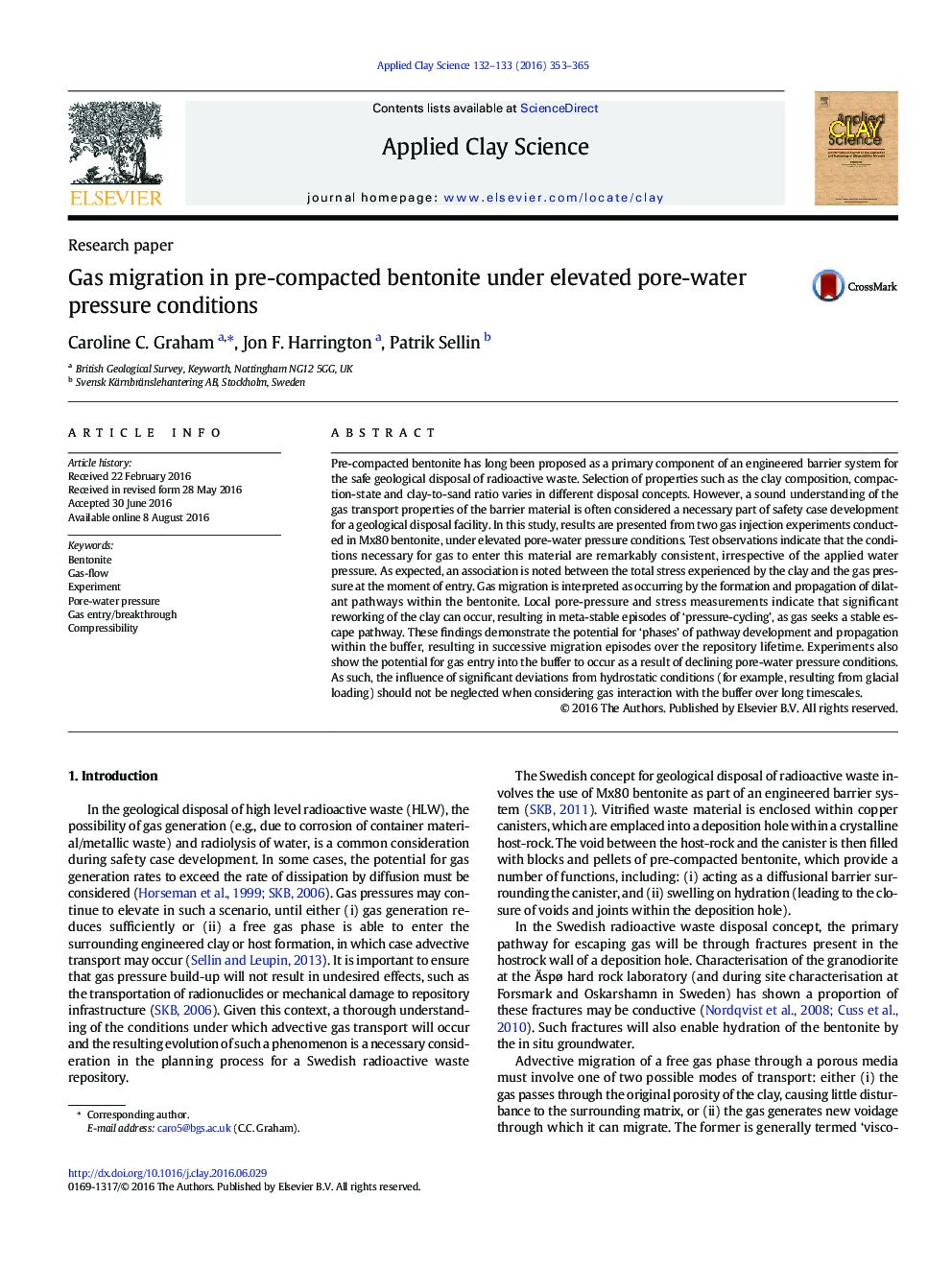| Article ID | Journal | Published Year | Pages | File Type |
|---|---|---|---|---|
| 5468767 | Applied Clay Science | 2016 | 13 Pages |
Abstract
Pre-compacted bentonite has long been proposed as a primary component of an engineered barrier system for the safe geological disposal of radioactive waste. Selection of properties such as the clay composition, compaction-state and clay-to-sand ratio varies in different disposal concepts. However, a sound understanding of the gas transport properties of the barrier material is often considered a necessary part of safety case development for a geological disposal facility. In this study, results are presented from two gas injection experiments conducted in Mx80 bentonite, under elevated pore-water pressure conditions. Test observations indicate that the conditions necessary for gas to enter this material are remarkably consistent, irrespective of the applied water pressure. As expected, an association is noted between the total stress experienced by the clay and the gas pressure at the moment of entry. Gas migration is interpreted as occurring by the formation and propagation of dilatant pathways within the bentonite. Local pore-pressure and stress measurements indicate that significant reworking of the clay can occur, resulting in meta-stable episodes of 'pressure-cycling', as gas seeks a stable escape pathway. These findings demonstrate the potential for 'phases' of pathway development and propagation within the buffer, resulting in successive migration episodes over the repository lifetime. Experiments also show the potential for gas entry into the buffer to occur as a result of declining pore-water pressure conditions. As such, the influence of significant deviations from hydrostatic conditions (for example, resulting from glacial loading) should not be neglected when considering gas interaction with the buffer over long timescales.
Related Topics
Physical Sciences and Engineering
Earth and Planetary Sciences
Geochemistry and Petrology
Authors
Caroline C. Graham, Jon F. Harrington, Patrik Sellin,
